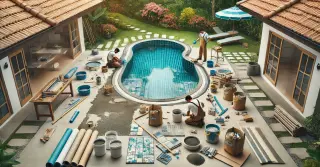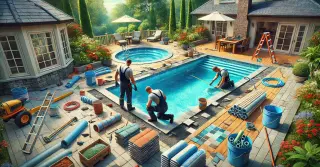Swimming Pool Resurfacing Bloomingdale NJ

Resurfacing your pool is a necessary maintenance procedure that ensures the longevity of the pool's structure and aesthetics. Over time, pool surfaces may show signs of wear, cracks, or discoloration, harming both their usability and aesthetic. Regular resurfacing ensures the pool remains safe, attractive, and enjoyable.
Picking the Ideal Resurfacing MaterialOne of the key decisions in the resurfacing process is selecting the right material for the resurfacing. Every material comes with distinct benefits, so considering your needs and preferences is important.
- Classic Plaster: Plaster remains a common choice for resurfacing due to its affordability and durability. It offers a smooth and clean finish and can be found in multiple colors. However, it needs more maintenance over time compared to other materials.
- Pebble Aggregate: Pebble aggregate finishes give a rustic and textured feel. They are very durable and resistant to slipping, making them suitable for busy pools. Pebble finishes offer various colors and mixes, allowing for a customized look.
- Quartz Finish: Quartz finishes combine plaster's smoothness with pebble's durability. They resist stains and etching very well, giving a durable, easy-care finish. These finishes are offered in various vivid colors, bringing sophistication and beauty to your pool.
Understanding the Resurfacing ProcessResurfacing a pool involves several key steps to ensure a high-quality result. Familiarizing yourself with these steps can ensure you are prepared.
- Pool Draining and Surface Preparation: The beginning of the resurfacing process is draining the water and preparing the pool surface. This involves removing the old surface material and giving the pool a thorough cleaning to ensure the new material adheres properly.
- New Surface Application: Once the pool is prepared, the new material is applied. This step requires precision and expertise to achieve a smooth and even finish. Professional installers use advanced tools and methods to deliver the best results.
- Curing the Surface and Refilling: Once the new surface is in place, it needs to cure properly. This requires letting the new surface harden and set over a specified period. Once curing is complete, the pool is refilled with fresh water, and it is ready to use.
Swimming pool resurfacing is essential for maintaining your pool. By choosing the right materials, understanding the process, and working with professionals, you can maintain a beautiful, functional, and safe pool.




